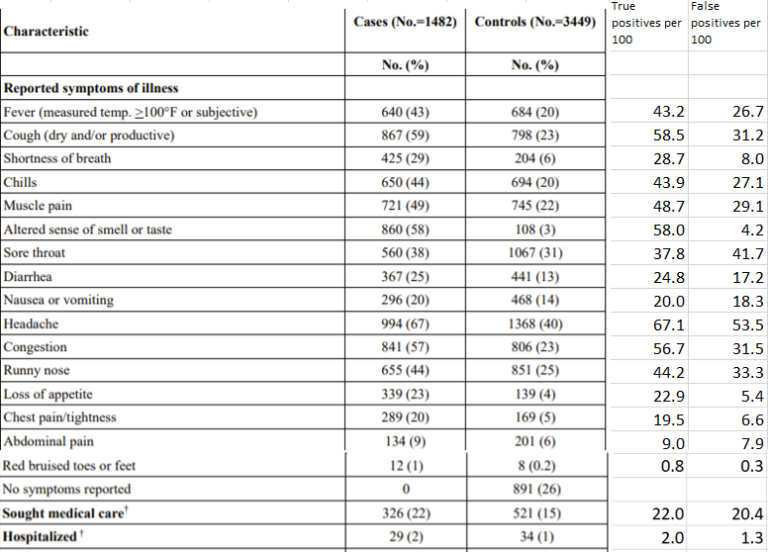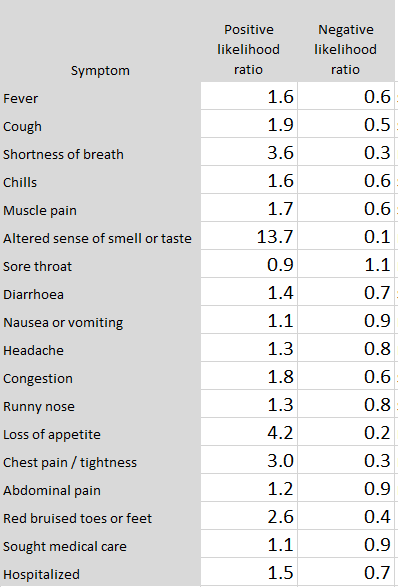Covid Still Has No Clearly Defined Symptoms b/c It is Determined by PCR Tests. Study Concludes common cold and gastrointestinal symptoms are wrongly associated with Covid
/From [HERE] A diagnosis is a compilation of clinical symptoms and testing adds further information to help doctors decide on the likelihood of a particular diagnosis. Because a covid case has been defined not by symptoms but by a positive test result this logic has been reversed. The consequence of this was an ever growing list of symptoms associated with the disease and even the concept of an ‘asymptomatic case’.
After 20 months of covid it is quite incredible that the symptoms associated with the disease have not been clearly defined. It is possible to figure out which symptoms are associated with a positive test and that has incidentally been reported in a paper in the New England Journal of Medicine studying vaccine efficacy among healthcare workers in the first five months of 2021. Using data from this paper symptoms such as sore throat, runny nose, diarrhoea, nausea, vomiting and abdominal pain can be shown to have no bearing on whether someone will test positive for covid.
The study measured healthcare workers who were tested to see if they had covid, and were asked about vaccination status but also which symptoms they had before testing. The paper then reported the proportion testing positive or negative. For example, they report that 9% of people with abdominal pain tested positive compared to 6% testing negative. Therefore, it might be assumed that abdominal pain is a relevant symptom for covid. However, the authors had included asymptomatic people among the negative control group and not the positives. This meant that the denominator for the percentage was too high in the negative group. Excluding the asymptomatic people from both groups gives a true percentage for comparison.
Figure 2 Sensitivity of each symptom as a test (percentage of people with the disease who have that symptom) and specificity of each symptom as a test (percentage of people without the disease who do not have that symptom)
To really understand the implications of each symptom we can treat each one as if whether or not you have it is, itself, a test for covid. In this way, we can calculate the percentage of people with the disease who have that symptom, the sensitivity of the symptom as a test. Likewise we can calculate the chance of someone testing negative if they do not have that symptom, the specificity of the symptom as a test. The latter gives an indication of the types of symptoms that people use to make the decision to seek a test.
Having broken down the problem this way it is possible to calculate a practical indicator of the meaning of each symptom. The first stage is to calculate the likelihood ratios. This is an intermediate step that leads us to the probability of someone with each symptom testing positive. [MORE]

































































































































































































































































































